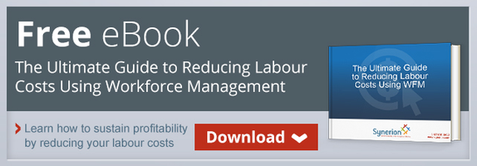 Whether you're preparing for a holiday rush or just getting into a summer slump, getting a grip on your labour costs is a task with huge potential for savings year round. Use these four tips to make your labour costs lean while still keeping your staffing and morale high.
Whether you're preparing for a holiday rush or just getting into a summer slump, getting a grip on your labour costs is a task with huge potential for savings year round. Use these four tips to make your labour costs lean while still keeping your staffing and morale high.
Schedule Smarter
If you're still relying on pen and paper or an outdated and clunky payroll system, now is the time to upgrade. A workforce management system is a low cost way to reduce labour costs and gain a broader understanding of employee time use. From preventing accidental overtime to identifying trends and inconsistencies in weekly schedules, a workforce management system allows managers to create a schedule with little time and few mistakes. Software can calculate weekly totals, identify gaps in coverage, and schedule employee time off. Step away from the paper or worksheet and implement a workforce management system to reduce labour costs.
Get Hard Figures
It's surprising how few businesses actually have the facts when it comes to labour costs. What is your total cost to hire a new employee? Staff your business with one employee for one hour? Stay open thirty minutes later? If you can't answer these questions, you need to calculate your costs to make better assessments about your staffing. Labour costs aren't magic but they do take some initiative and energy to calculate. Make the time to set a dollar amount to your labour costs and update it frequently. This figure can help you make decisions on hiring, overtime, and staff reduction, helping reduce labour costs over the life of the business.
Look Back to Increase Efficiency
History repeats itself and nowhere is that more true than in business. There are busy seasons and slow seasons and balancing both with adequate staffing can be a tricky burden to overcome. Another reason to implement a workforce management system is the ability to look back at previous months staffing and actual needs. Look through the last year's schedules and payroll costs to find trends. Whether it was a reduction of workload in February or a significant lack of coverage during summer vacation, these trends often repeat and by identifying them, managers can hire and schedule accordingly. Don't let the holiday rush take you by surprise, again, look back at your labour cost history and plan for the future accordingly.
Know Your Overtime
While minimizing overtime is always the goal of management, some overtime just can't be helped. The odd employee emergency or bump in workload can cause justifiable overtime but other occurrences, like early punch-ins or panic drive scheduling, can be avoided. Start with a small time frame, such as the previous month, to determine why and where overtime occurred. Is it the same pool of employees coming in five minutes early or was a sudden departure to blame? Once you know your labour costs, you can translate those instances of overtime into a definable cost to determine whether they were justifiable and whether they require additional staffing.
Labour costs aren't a mystery. They're a solid number that can be manipulated and controlled. The trick is just knowing how to do it. These four tips help put managers in a place to truly assess and understand their labour costs, allowing for reduction and smarter management of their resources. Set time aside in the coming week to start implementing these tips to staff the coming months for effectively than ever.
